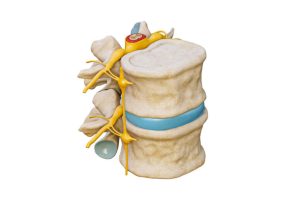
Understanding Spinal Discs as the Unsung Heroes of Back Health
Our spine’s resilience, flexibility, and stability owe much of their success to an often-overlooked component: spinal discs. Tucked between each pair of vertebrae, these intervertebral discs serve as unsung heroes of our skeletal system – so in this post we’ll dive deeper into their anatomy, composition, and their role in supporting optimal back health.
Anatomy of a Spinal Disc
A spinal disc is composed of three essential parts, known as annulus fibrosus, nucleus pulposus and endplates. The annulus fibrosus is made of durable fibrous tissue which encases its inner core while nucleus pulposus acts as a shock-absorber and movement facilitator; finally endplates serve to provide vital nutritional exchange between vertebrae while maintaining overall disc vitality.
Function and Mechanics
To understand the significance of spinal discs, it’s essential to comprehend their biomechanics. These discs allow movement between vertebrae, cushioning the impacts from daily activities like walking, running and bending; acting as spine stabilizers to support intricate spinal architecture while evenly dispersing forces throughout their vertebral columns to prevent premature wear and tear on them directly.
Nurturing Healthy Spinal Discs
Nurturing healthy spinal discs is key to avoiding discomfort, pain and mobility issues. Proper hydration of the nucleus pulposus helps preserve its shock-absorbing capabilities; in addition, good blood flow to endplates ensures effective exchange and waste removal from nutrients to the endplates; ultimately maintaining overall well-being for robust discs. Furthermore, practicing correct posture, engaging in physical activity regularly and eating a nutritious diet all help build strong spinal discs.

This post has given us insight into the world of spinal discs. These seemingly innocuous components form the backbone of our health and optimal performance is critical to living an enjoyable life without discomfort. Gaining knowledge about their composition, function, and care can empower you to make informed decisions regarding your back health; future posts in this blog will focus on non-surgical techniques for spinal disc repair to deepen our knowledge even further.
Want to heal your disc without surgery? Call us today to schedule your complimentary consultation and evaluation to see if you qualify for treatment at The Nerve and Disc Institute. (586) 416-3472